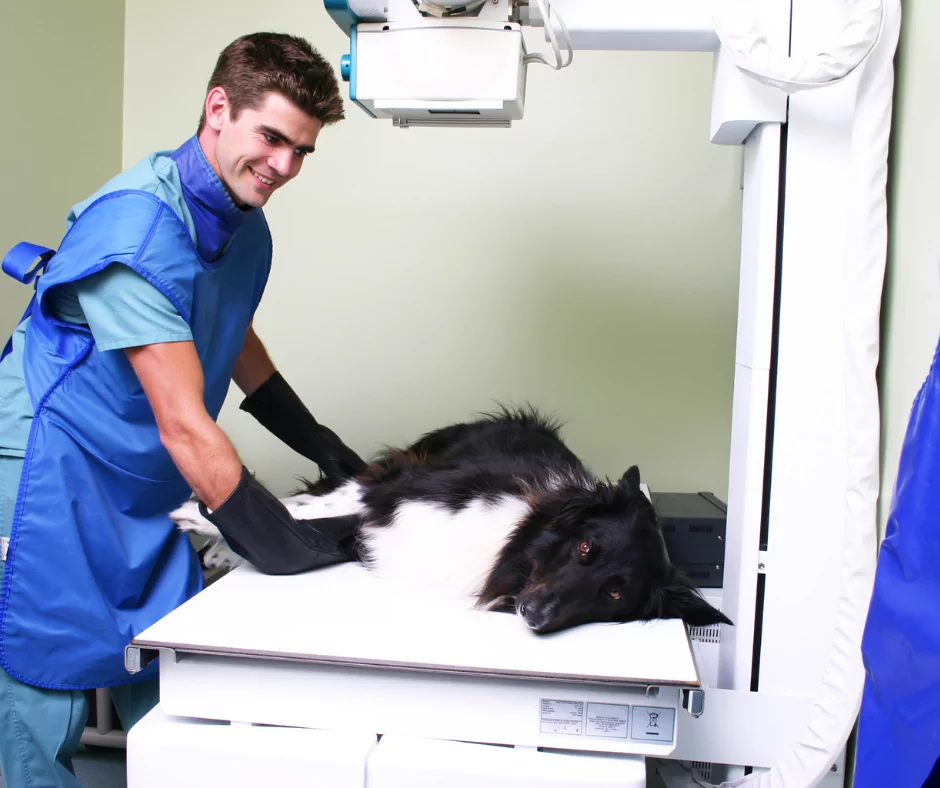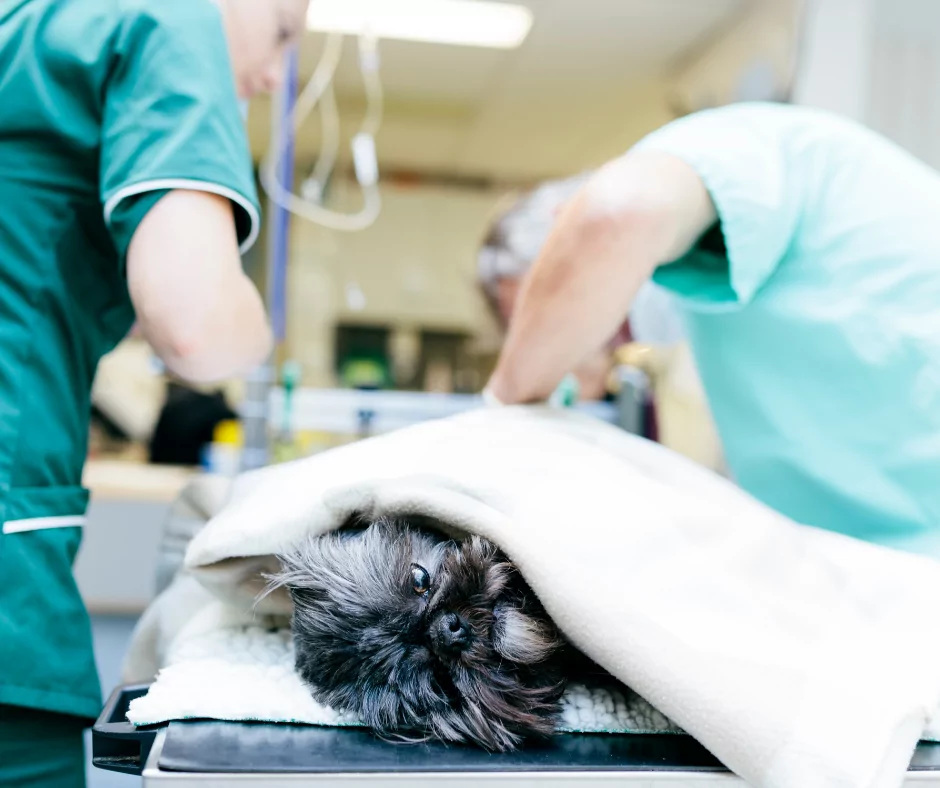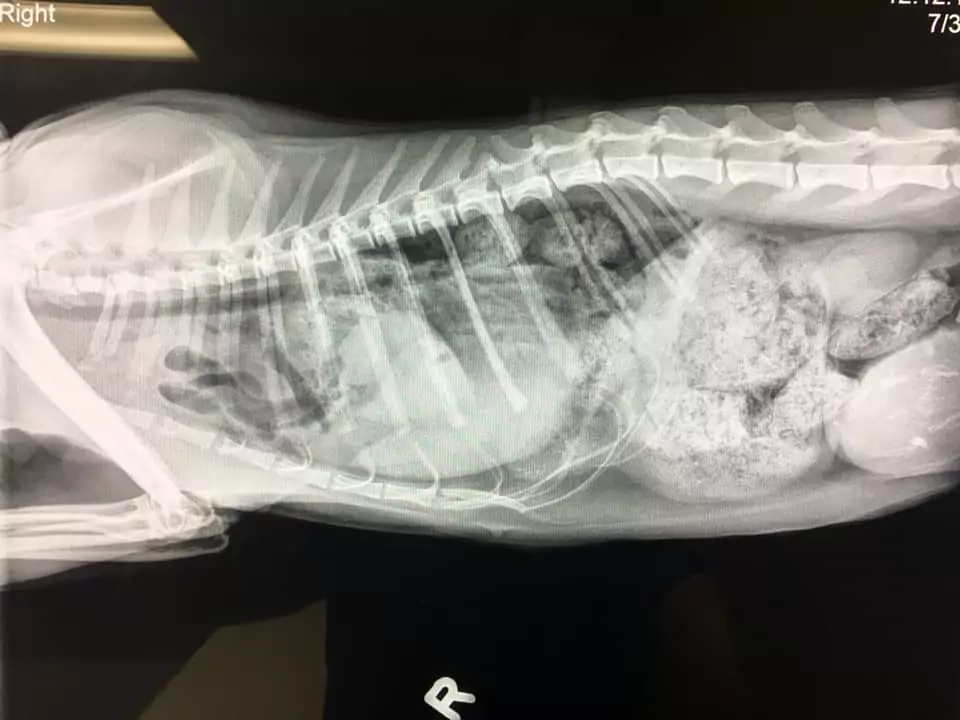What is a Diaphragmatic Hernia?
A diaphragmatic hernia in dogs occurs when there is a break in the continuity of the diaphragm and this allows protrusion of abdominal viscera into the thorax. In small animals, such as dogs and cats, diaphragmatic hernias usually follow violent trauma such as car accidents or falling from very high. It is very seldom that congenital defects of the diaphragm can lead to herniation.

What are the Clinical Signs of Diaphragmatic Hernia in Dogs?
The clinical signs may vary depending on the animal and duration. In the acute state of diaphragmatic hernia, there is the obvious dyspnea. The dyspnea may vary from subclinical to life-threatening. In chronic cases, there might be weight loss too.
On physical examination, the veterinarian will not be able to find lung sounds and may find some GI sounds in the thorax. Diagnosis can be made with just a physical examination but it is preferred to be confirmed with an x-ray.
Symptoms of Diaphragmatic Hernia in Canines

Dogs develop a diaphragmatic hernia the same way humans do. The term “diaphragmatic hernia” refers to an injury that punctures the muscle separating the abdomen and chest, causing the stomach or small intestines to shift into the chest cavity.
The most common symptom of this condition is the regurgitation of food and subsequent vomiting. Diaphragmatic hernias can be a life-threatening problem if they are left untreated. Diaphragmatic hernia surgery is usually required to treat the condition.
Symptoms of diaphragmatic hernia in dogs involve sudden and sudden regurgitation of food and water. The regurgitated food and water may be mixed with mucus. The vomit is greenish-yellow or brown in color. Signs of pain are uncommon but can be observed when a dog is rested after a meal. The food that is regurgitated is undigested and the dog may have difficulty breathing.
Diaphragmatic hernia symptoms are usually observed in young dogs, between the ages of six months and three years. Symptoms are not seen in all dogs with a diaphragmatic hernia, as some dogs do not regurgitate food.
This is especially true if they are relatively well-nourished, such as those fed canned foods. The cause of diaphragmatic hernia in dogs is unknown.
Treatment of Diaphragmatic Hernia in Dogs
It is preferable to repair a diaphragmatic hernia surgically. More than often there is additional tearing of abdominal tissues that need to be repaired. In any case, the patient needs to be stabilized before surgery.
If the patient had chronic diaphragmatic hernia it is very important for the surgery to go smooth and careful because reexpansion pulmonary edema is likely fatal.

What Does a Diaphragmatic Hernia Look Like in a Dog?
X-ray of a diaphragmatic hernia in a dog:
On the video below, you can see an emergency surgical repair of a diaphragmatic hernia in a dog right after a c-section.
“A dog in an animal shelter was spayed and crashed during recovery (breathing and heartbeat stopped). CPR brought the dog back to life and x-rays revealed a diaphragmatic hernia. This is a hole in the diaphragm (the muscular separation between the chest cavity where the lungs and heart are located and the abdomen cavity, where the stomach, intestines, and most other internal organs are located.”
“On the x-ray the dog’s intestines were inside of the chest cavity with the heart and lungs, causing her to have difficulty breathing. She was taken into surgery in an emergency to repair the hernia. This was the first time that the shelter had ever attempted a diaphragmatic hernia repair on a patient. The surgery was successful and the dog is doing well.”
If you liked this article, see “X-rays of enlarged hearts in dogs” on our blog.

